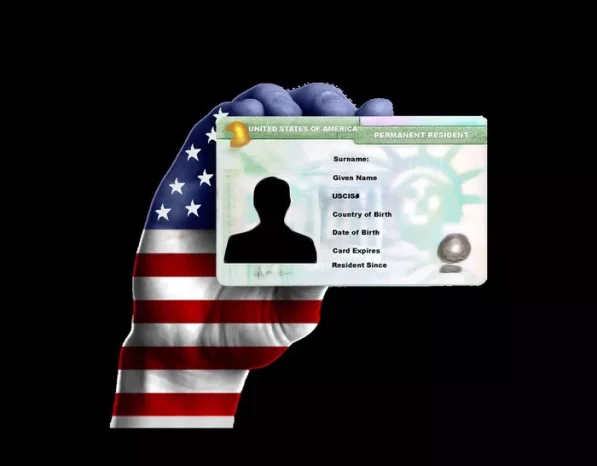In the realm of U.S. immigration, family-based green cards serve as a pivotal pathway for individuals seeking lawful permanent residence through family ties. This article explores the intricate criteria and eligibility requirements for obtaining a family-based green card, offering a comprehensive guide to assist prospective applicants in understanding the process.
Introduction to Family-Based Immigration
Family-based immigration is a cornerstone of U.S. immigration policy, designed to unite families by allowing U.S. citizens and lawful permanent residents (LPRs) to sponsor certain family members for a green card. This sponsorship enables eligible relatives to live and work permanently in the United States. Understanding the types of family relationships that qualify for sponsorship is crucial for determining eligibility under this category.
Immediate Relatives vs. Preference Categories
The eligibility criteria for family-based green cards can be broadly categorized into two groups: immediate relatives and preference categories.
1. Immediate Relatives
Immediate relatives are given the highest priority under U.S. immigration law and include:
2. Spouses of U.S. citizens
- Unmarried children under 21 years of age of U.S. citizens
- Parents of adult U.S. citizens (aged 21 and over)
These relationships are considered immediate because there is no numerical limit on the number of visas available each year for these categories. Consequently, immediate relatives do not have to wait for a visa to become available once their petition is approved.
Preference Categories
Preference categories encompass more distant family relationships and are subject to annual numerical limits on visas. These categories are:
F1: Unmarried sons and daughters of U.S. citizens and their minor children (up to 21 years old)
F2A: Spouses and unmarried children (under 21 years old) of lawful permanent residents
F2B: Unmarried sons and daughters (21 years or older) of lawful permanent residents
F3: Married sons and daughters of U.S. citizens, along with their spouses and minor children
F4: Siblings of adult U.S. citizens, along with their spouses and minor children
The preference categories are prioritized numerically, with F1 having the highest preference and F4 the lowest. Consequently, individuals in these categories may face significant waiting periods before a visa becomes available, depending on visa availability and the applicant’s priority date.
Eligibility Requirements for Sponsors
In addition to identifying eligible family relationships, sponsors (U.S. citizens or LPRs) must meet certain criteria to petition for a family-based green card:
U.S. Citizens: Must be at least 21 years old and able to demonstrate U.S. citizenship through birth, naturalization, or derived citizenship (e.g., through parents).
Lawful Permanent Residents: Must be living in the United States and in possession of a valid green card.
Sponsors must also be able to financially support their relative(s) by demonstrating they have income or assets above the required minimum threshold (typically 125% of the federal poverty guidelines) to ensure the sponsored immigrant(s) will not become a public charge.
Eligibility Requirements for Family Members
For individuals seeking a family-based green card, eligibility requirements vary based on the specific relationship to the sponsor:
Spouses: Must provide evidence of a valid marital relationship and intend to establish a life together in the United States.
Children: Must meet age requirements and be unmarried. Biological, adopted, and stepchildren may all qualify under certain circumstances.
Parents: Must prove the sponsor’s U.S. citizenship and the existence of a parent-child relationship.
Siblings and Other Relatives: Must establish the familial relationship and adhere to specific eligibility criteria outlined for each preference category.
SEE ALSO: 8 REASONS FOR WHY IS MY GREEN CARD TAKING SO LONG
Application Process
The process of obtaining a family-based green card typically involves several key steps:
File Form I-130 (Petition for Alien Relative): The sponsor initiates the process by submitting this form to U.S. Citizenship and Immigration Services (USCIS), along with supporting documentation.
Priority Date: USCIS assigns a priority date based on the date Form I-130 is received, establishing the applicant’s place in line for visa processing.
Visa Availability: Applicants in preference categories must wait for a visa to become available according to the Visa Bulletin published monthly by the U.S. Department of State.
Adjustment of Status or Consular Processing: Once a visa is available, applicants residing in the United States may apply for adjustment of status (Form I-485) if eligible, while those outside the U.S. undergo consular processing at a U.S. embassy or consulate abroad.
Interview and Decision: Applicants are typically required to attend an interview to demonstrate eligibility and provide supporting documents. USCIS or the U.S. Department of State then decides whether to approve the green card application.
Challenges and Considerations
While family-based immigration offers a valuable avenue for family reunification, several challenges and considerations exist:
Wait Times: Preference category applicants often face significant wait times due to visa backlogs, particularly for lower-priority categories such as siblings of U.S. citizens.
Documentation: Applicants must gather extensive documentation to prove familial relationships, sponsor eligibility, and financial support.
Public Charge Considerations: Sponsors must demonstrate financial ability to support their relative(s) to prevent them from becoming a public charge.
Legal Support: Navigating the complexities of immigration law can be challenging, and applicants may benefit from legal assistance to ensure all requirements are met.
Conclusion
Family-based green cards play a vital role in U.S. immigration policy by facilitating family reunification. Understanding the eligibility requirements, application process, and potential challenges is essential for prospective applicants and their sponsors. By adhering to the guidelines outlined in this article, individuals can navigate the path to obtaining lawful permanent residence through family ties with greater clarity and confidence.


